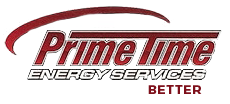Understanding Vapor Barriers: Protecting Your Home from Moisture
A vapor barrier is an essential component in building construction, designed to control the movement of moisture vapor within building assemblies. Properly installed vapor barriers help maintain the integrity of a building’s structure, enhance energy efficiency, and improve indoor air quality by preventing unwanted moisture infiltration.
What is a Vapor Barrier?
A vapor barrier is a material that resists the diffusion of moisture vapor through walls, ceilings, floors, and other parts of a building envelope. Unlike vapor retarders, which slow down moisture movement, vapor barriers are highly effective at stopping vapor transmission. They are typically installed on the warm side of insulation to prevent moisture from entering and condensing within the building structure.
Importance of Vapor Barriers
-
Preventing Moisture Damage
Excess moisture can lead to a variety of structural problems, including mold growth, wood rot, and deterioration of insulation materials. A vapor barrier helps protect the building’s structural integrity by limiting moisture accumulation. -
Enhancing Energy Efficiency
By controlling moisture movement, vapor barriers contribute to maintaining consistent indoor temperatures. This reduces the load on heating and cooling systems, leading to lower energy consumption and utility bills. -
Improving Indoor Air Quality
Moisture control is crucial for preventing mold and mildew, which can adversely affect indoor air quality and pose health risks to occupants. Vapor barriers help create a healthier living environment. -
Extending Building Lifespan
Protecting building materials from moisture-related damage extends the overall lifespan of the structure, reducing the need for costly repairs and maintenance.
Common Materials Used for Vapor Barriers
-
Polyethylene Plastic Sheeting
Available in various thicknesses (typically 6 mil or higher), polyethylene is a widely used vapor barrier material due to its affordability and ease of installation. -
Foil-Faced Insulation
Insulation products with a foil facing serve as both insulation and a vapor barrier, providing dual functionality. -
Spray-On Vapor Barriers
Liquid-applied barriers that form a continuous membrane when cured, offering excellent coverage and flexibility. -
Specialty Vapor Barrier Paints
Coatings that can be applied to surfaces to create a vapor-resistant layer, suitable for specific applications.
Installation Considerations
-
Placement
Vapor barriers should be installed on the warm side of the insulation to prevent warm, moist air from reaching cold surfaces where condensation can occur. In colder climates like Buffalo, this typically means placing the vapor barrier on the interior side of the wall or ceiling. -
Sealing Joints and Penetrations
Proper sealing of seams, joints, and penetrations (e.g., around windows, doors, and electrical outlets) is crucial to ensure the vapor barrier functions effectively. Use appropriate tape or sealants to create an airtight seal. -
Avoiding Traps for Moisture
Ensure that the vapor barrier does not trap moisture within wall cavities or other building assemblies. Proper ventilation and moisture management strategies should complement the use of vapor barriers. -
Compatibility with Building Materials
Select vapor barrier materials that are compatible with other building components to prevent chemical reactions or degradation over time.
Benefits of Using Vapor Barriers
-
Moisture Control
Effectively limits the movement of moisture vapor, reducing the risk of condensation and related issues. -
Energy Efficiency
Enhances the performance of insulation by maintaining its thermal resistance, leading to lower energy costs. -
Structural Protection
Prevents moisture-related damage to building materials, ensuring long-term durability and stability. -
Healthier Indoor Environment
Reduces the likelihood of mold and mildew growth, promoting better indoor air quality and occupant health.
Potential Issues and Solutions
-
Improper Installation
Gaps, tears, or incorrect placement can compromise the effectiveness of a vapor barrier. To avoid this, follow manufacturer guidelines meticulously and consider professional installation. -
Over-Reliance on Vapor Barriers
Vapor barriers should be part of a comprehensive moisture management strategy, including proper ventilation and drainage systems. -
Climate Considerations
The need and placement of vapor barriers can vary based on climate. In some humid climates, vapor barriers may be installed on the exterior side or omitted in favor of vapor-permeable materials to allow for moisture to escape.
Conclusion
Vapor barriers are a vital element in building construction, playing a key role in moisture management, energy efficiency, and structural integrity. Proper selection and installation of vapor barriers can lead to significant benefits, including reduced energy costs, enhanced comfort, and a healthier living environment.
For homeowners and builders in Buffalo looking to optimize their building’s performance, PrimeTime Energy Services offers expert guidance and high-quality vapor barrier solutions tailored to the region’s specific climate needs. Visit www.primetime-energy.com or call 716-685-4331 to learn more about how we can help protect and improve your home.

